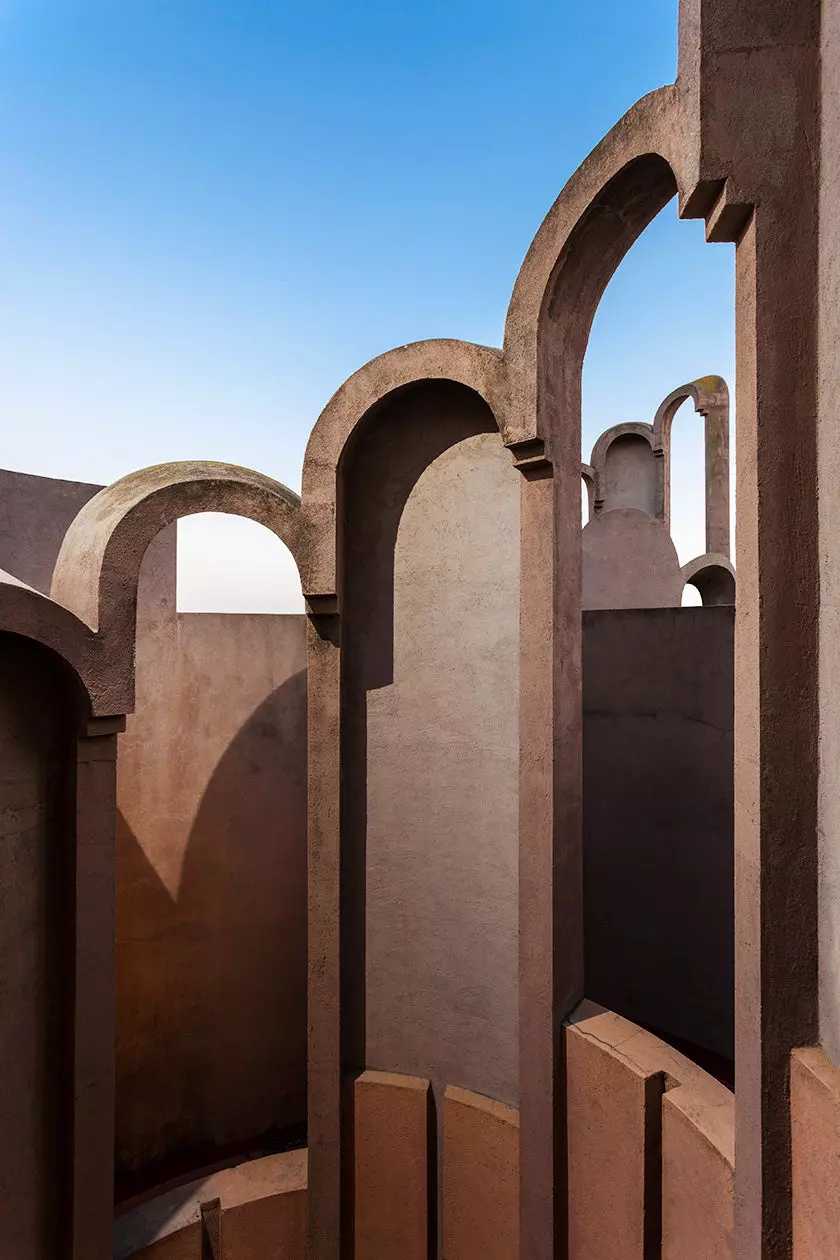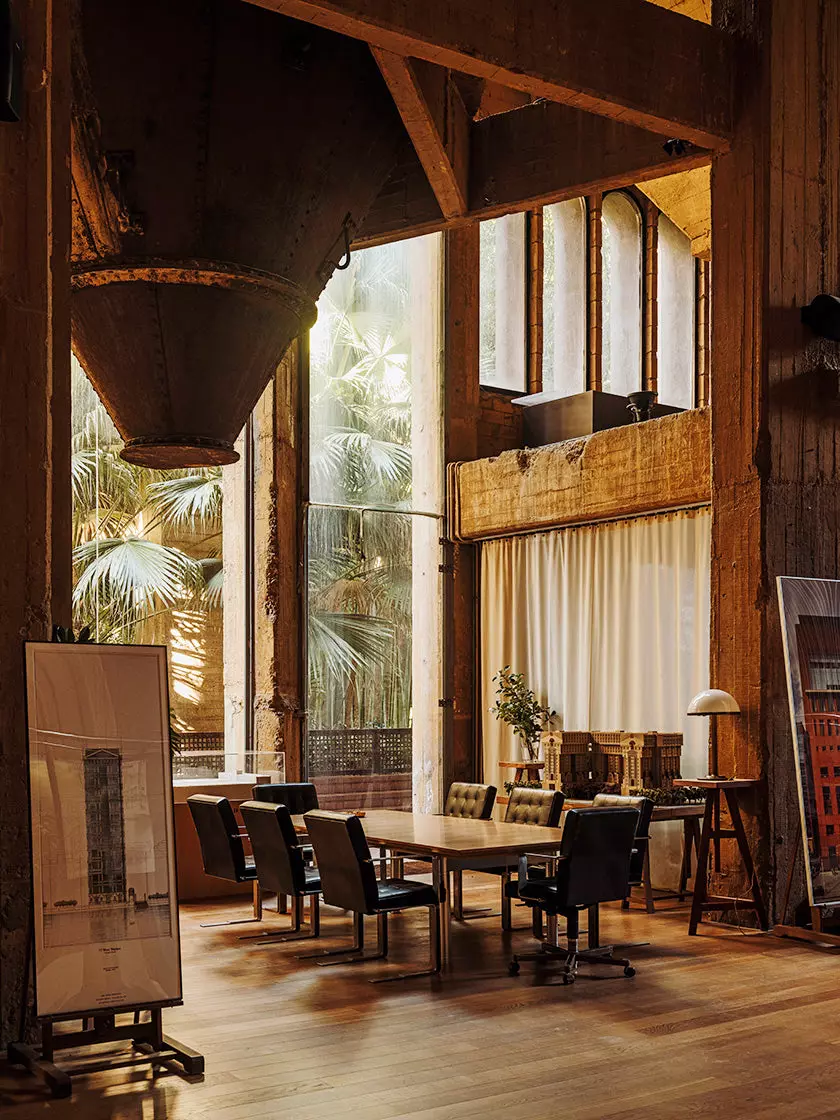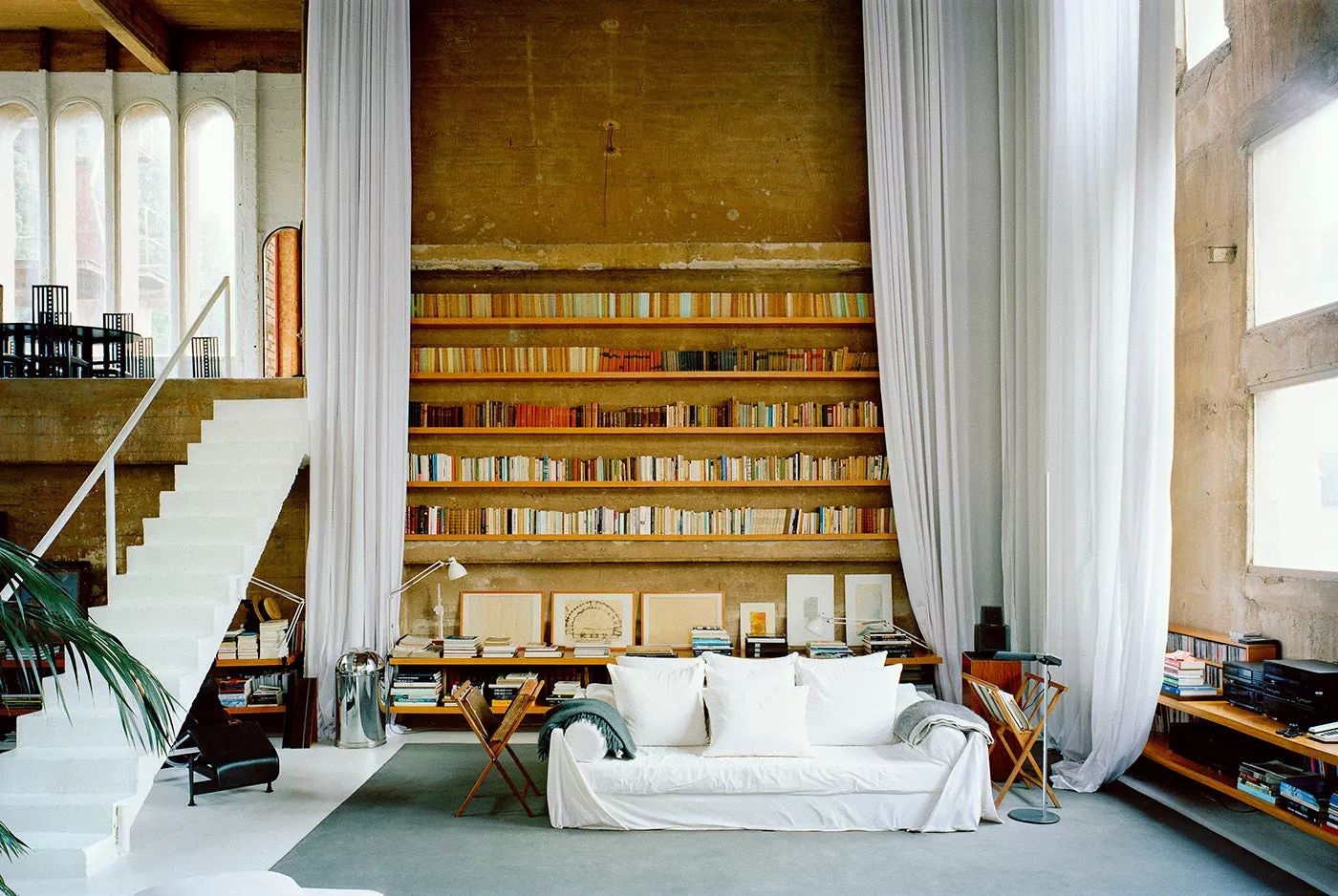In 1973, amidst the conservative landscape of Franco's dictatorship, architect Ricardo Bofill faced a dilemma. His dreams of building a new home in Barcelona's barrios were thwarted by city planners. However, this setback led Bofill to a cement factory on the outskirts of the city, which would become his creative muse and a defining manifesto.
A Legacy of Radical Ideas and Utopian Intentions
Today, on his 80th birthday, we celebrate Ricardo Bofill's lifetime of architectural achievements. Influenced by his parents' liberal beliefs, Bofill's mission has always been to create communal living spaces that unite people and elevate the human experience. From Espaces d'Abraxas to Walden 7 to Muralla Roja, his triumphs have left an indelible mark on architectural history.
 The original silos from the cement factory were transformed from functional apparatuses to decorative sculptures. (Photo: Lluis Carbonell)
The original silos from the cement factory were transformed from functional apparatuses to decorative sculptures. (Photo: Lluis Carbonell)
La Fábrica: A Monument to Transformation
Among Bofill's remarkable achievements, La Fábrica stands as a testament to his vision and worldview. Once an abandoned cement factory symbolizing Spain's industrial boom, it has been tactfully transformed from a Brutalist structure to a romantic marvel. Bofill, in his book Visions of Architecture, recalls his decision to tackle the factory: "I wanted to live there for the pleasure of the challenge." The factory's industrial wasteland surroundings offered the space and possibilities he longed for.
 The wood-and-steel boardroom table in the colossal studio space referred to as La Catedral. A series of concrete hoppers dip into space. (Photo: Salva López)
The wood-and-steel boardroom table in the colossal studio space referred to as La Catedral. A series of concrete hoppers dip into space. (Photo: Salva López)
Balancing Preservation and Modernization
Finding the balance between preservation and contemporary interventions was the greatest challenge for Bofill. The factory's existing structure offered a cost-effective development opportunity, allowing him to maintain its historical value. La Fábrica became a milestone in Bofill's career, reflecting his anti-luxury stance and his belief that architecture should be an expression of inclusivity rather than elitism.
 In Visions of Architecture, Bofill says, "The factory is a magic place whose strange atmosphere (can hardly) be perceived by a profane eye. I like life to be perfectly programmed here, ritualized, in total contrast with my turbulent nomad life.” (Photo: Gregori Civera)
In Visions of Architecture, Bofill says, "The factory is a magic place whose strange atmosphere (can hardly) be perceived by a profane eye. I like life to be perfectly programmed here, ritualized, in total contrast with my turbulent nomad life.” (Photo: Gregori Civera)
A Castle of Styles
Through a fusion of Brutalism, Surrealism, Historicism, Postmodernism, and Art Nouveau, Bofill has fashioned his modern-day castle. La Fábrica conceals itself within an enveloping sheet of green vegetation, creating a closed and withdrawn environment for Bofill's studio. To the observer, it appears as a monumental amalgamation of art, concrete, and palm trees, evoking feelings of both fascination and unease.
 The original factory appealed to Bofill because of some surreal qualities in its architecture, including these stairs leading to nowhere. (Photo: Serena Vergano)
The original factory appealed to Bofill because of some surreal qualities in its architecture, including these stairs leading to nowhere. (Photo: Serena Vergano)
Inspiration and Influence
La Fábrica holds a fundamental place in Bofill's architectural journey. It has shaped his creations, such as Arcades du Lac and the Maritxell Sanctuary. Serving as both a home and a creative space, it allows Bofill to fully explore his architectural and interior visions. This converted industrial marvel not only captivates design enthusiasts but also serves as a muse for Bofill and his pioneering studio. Perhaps, when La Fábrica is complete, it will stand as the culmination of Bofill's career and body of work.
Step into Ricardo Bofill's visionary world in Visions of Architecture.

















